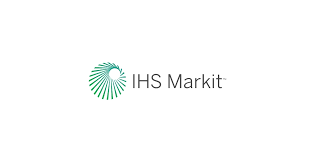Manufacturing continues quarterly decline in key Asean countries, index finds
The headline index fell from 49.7 in June to 49.5 in July, signalling a second successive monthly deterioration in operating conditions at Asean manufacturers. Furthermore, this marked the lowest reading in exactly two years.
Contributing to the decline was a slight reduction in overall output, the first recorded since July 2017. This occurred alongside only a marginal increase in new orders, although the rate of growth was slightly stronger than in June. Demand conditions were also strengthened by the fastest rise in foreign sales for a year. However, employment continued to fall.
July 2019 data were collected July 12-25, 2019.
Country-level data showed business conditions improving in four of the seven monitored areas. Myanmar’s manufacturing sector continued its run of solid improvements, posting a headline reading (52.9) broadly in line with that seen in June.
Vietnam also saw a strong rate of growth during July (52.6) that was the most marked for seven months.
The Philippines meanwhile recorded a moderate improvement in manufacturing conditions, with the headline index (52.1) rising for the third month in a row.
By comparison, Thailand saw growth slow to only a marginal pace in July (50.3).
Indonesia’s manufacturing sector meanwhile slipped into decline, with firms reporting the quickest deterioration in operating conditions since the end of 2017 (49.6).
Malaysia continued to signal weakening manufacturing conditions, as the headline index fell to a four-month low (47.6).
Lastly, Singapore extended the current run of deterioration in its manufacturing sector to one year, although the downturn in July (44.5) was softer than in June.
Commenting on the latest survey results, David Owen, an economist at IHS Markit, said the Asean manufacturing sector remained in decline in July, according to the latest PMI survey data. “In fact, the rate of deterioration was the steepest in two years, driven by lower output and employment. Firms were led to reduce production levels on the back of only marginal increases in new orders in recent months.
“As such, manufacturers appear in a difficult position, and require stronger demand growth to lift them out of the current soft patch. Output prices also rose at a subdued pace, the joint-slowest since August 2016, suggesting that some firms are relying on discounts to attract customers. Thus, next month’s data will show whether the downturn in the Asean region is temporary or long term.”
The IHS Markit Asean Manufacturing PMI is compiled by IHS Markit from responses to monthly questionnaires sent to purchasing managers in panels of manufacturers in Indonesia, Malaysia, Myanmar, the Philippines, Singapore, Thailand and Vietnam, totalling around 2,100 manufacturers.
These countries account for 98 per cent of Asean manufacturing value added. The panels are stratified by detailed sector and company workforce size, based on contributions to GDP.
Survey responses are collected in the second half of each month and indicate the direction of change compared to the previous month. A diffusion index is calculated for each survey variable at the national level. The index is the sum of the percentage of “higher “responses and half the percentage of “unchanged” responses. The indices vary between 0 and 100, with a reading above 50 indicating an overall increase compared to the previous month, and below 50 an overall decrease.
The headline figure is the Purchasing Managers’ Index™ (PMI). The PMI is a weighted average of the following five indices: new orders (30 per cent), output (25 per cent), employment (20 per cent), suppliers’ delivery times(15 per cent) and stocks of purchases (10 per cent).
Source: https://www.nationthailand.com/business/30374026


 English
English




